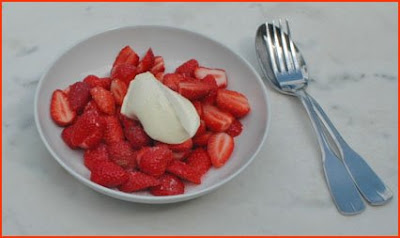 The genius who introduced punched-card digital technology into the textile industry was the inventor Joseph Marie Jacquard [1752-1834] from Lyon. Later, his automatic card-reader inspired the Englishman Charles Babbage [1791-1871] who is generally looked upon as the inventor of the computer.
The genius who introduced punched-card digital technology into the textile industry was the inventor Joseph Marie Jacquard [1752-1834] from Lyon. Later, his automatic card-reader inspired the Englishman Charles Babbage [1791-1871] who is generally looked upon as the inventor of the computer. Prior to Jacquard, another brilliant Frenchman had been deeply involved in the early days of the textile industry: Jacques Vaucanson, one of Grenoble's most famous sons (along with Stendhal). It might be said that, without the basic mechanism invented by Vaucanson, Jacquard would not have been able to devise his punched-card apparatus.
Prior to Jacquard, another brilliant Frenchman had been deeply involved in the early days of the textile industry: Jacques Vaucanson, one of Grenoble's most famous sons (along with Stendhal). It might be said that, without the basic mechanism invented by Vaucanson, Jacquard would not have been able to devise his punched-card apparatus.Well, much of Vaucanson's experimentation was carried on in La Sône, in that same nearby village from which I recently looked out over ancient woods towards the Vercors... as I explained in my recent article entitled An old map talked to me of trees [display].
 Before getting involved in the design of weaving machines, Vaucanson had become famous as a creator of automats, the most spectacular of which was a mechanical duck that bent over to eat food, and then went on to drop a nice little turd. Unfortunately, no traces of Vaucanson's automats (including, beside the duck, a flute-player and a drummer) have survived, but there are ample historical accounts of his achievements.
Before getting involved in the design of weaving machines, Vaucanson had become famous as a creator of automats, the most spectacular of which was a mechanical duck that bent over to eat food, and then went on to drop a nice little turd. Unfortunately, no traces of Vaucanson's automats (including, beside the duck, a flute-player and a drummer) have survived, but there are ample historical accounts of his achievements.In my humble personal life, I cannot insist sufficiently upon the profound inspiration provided by these two great French inventors: Vaucanson and Jacquard.
 Many years ago, when I was working with French Television and became involved in artificial intelligence (theme of a series of five documentaries that I shot mainly in the USA), a kind colleague gave me this book. At that time, knowing next to nothing about the illustrious creator of automats, I could never have imagined that I would soon be working in a hi-tech computing laboratory, Delphia, in Vaucanson's native city, and that I would end up living not far away from the beautiful castle at La Sône in which he resided, as a guest of the Jubié family, while carrying out the fine tuning of his machine. Today, the privately-owned castle is a patrimonial jewel in the Dauphiné.
Many years ago, when I was working with French Television and became involved in artificial intelligence (theme of a series of five documentaries that I shot mainly in the USA), a kind colleague gave me this book. At that time, knowing next to nothing about the illustrious creator of automats, I could never have imagined that I would soon be working in a hi-tech computing laboratory, Delphia, in Vaucanson's native city, and that I would end up living not far away from the beautiful castle at La Sône in which he resided, as a guest of the Jubié family, while carrying out the fine tuning of his machine. Today, the privately-owned castle is a patrimonial jewel in the Dauphiné. These days, all that I've found of the premises of Vaucanson's silk-weaving factory at La Sône is a grim fresco of unknown vintage:
These days, all that I've found of the premises of Vaucanson's silk-weaving factory at La Sône is a grim fresco of unknown vintage: You might say that Vaucanson ushered in the industrial age when he invented his machine for weaving silk. And the inevitable next step consisted of generations of workers who entered that doorway, every morning, under the terrible effigy of a lion with its paws enchained in metal loops. Not exactly an ideal symbol to encourage pride and productivity.
You might say that Vaucanson ushered in the industrial age when he invented his machine for weaving silk. And the inevitable next step consisted of generations of workers who entered that doorway, every morning, under the terrible effigy of a lion with its paws enchained in metal loops. Not exactly an ideal symbol to encourage pride and productivity.A lot has changed since then. It's highly likely that factory managers no longer think of their workers as enchained lions. Be that as it may, I'm happy to see that the economic worker-lions of our modern society are henceforth hunting as an intelligent pack. They've smelt blood, and their political appetite is huge, as you might imagine.














































